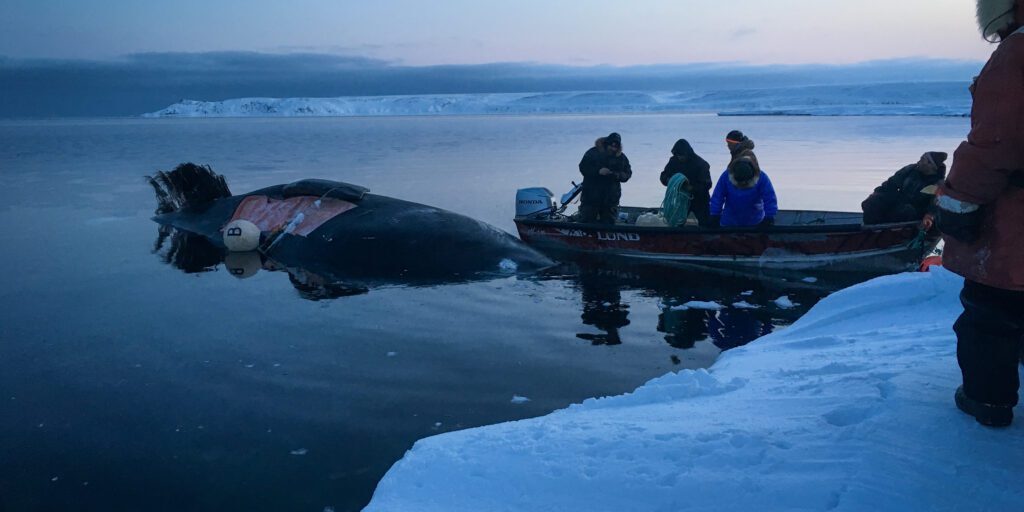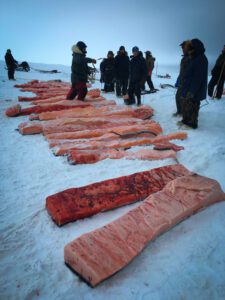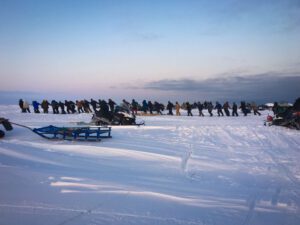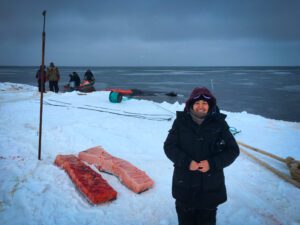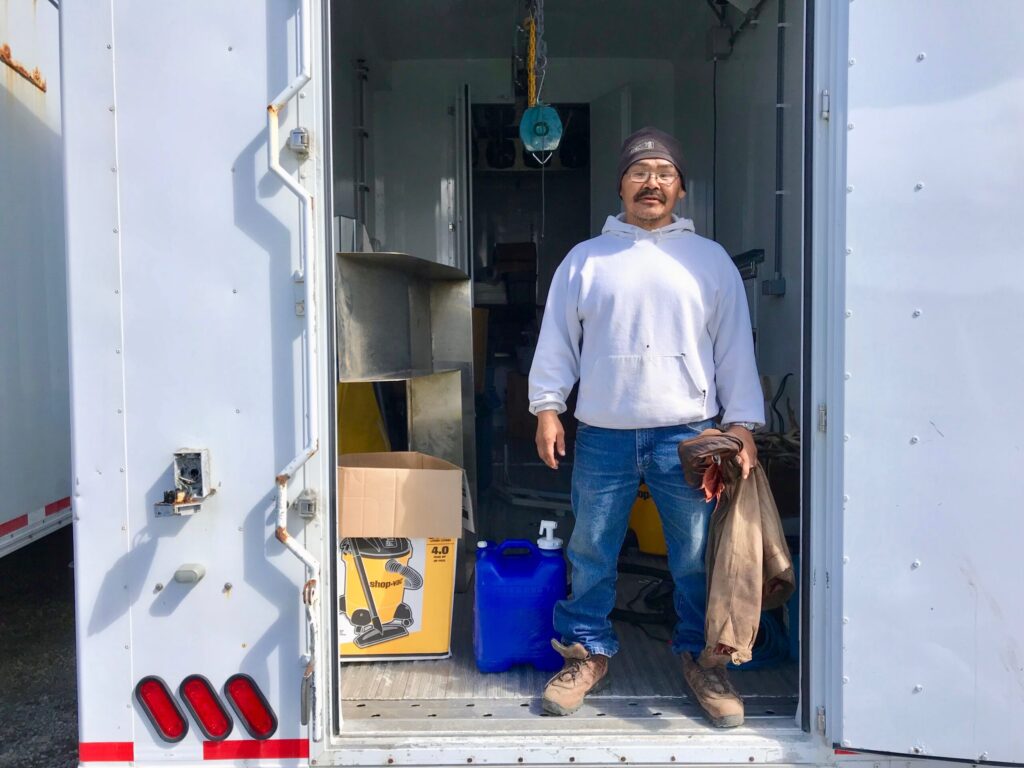A whaling crew from Savoonga landed its second bowhead of the season this week. The St. Lawrence Island community has been working non-stop to haul the whale out of the icy waters, harvest its meat, and distribute it around the village.
For the last few weeks, whaling crews have been camped out on the southwest side of St. Lawrence Island. Elvin Noongwook was on the crew that landed Savoonga’s first whale in 1972.
Sitting around his kitchen table, the elder said they’ve been going to the same spot ever since.
“We call the whaling camp ‘Powooliak.’” Noongwook explained. “That’s where we’re doing whaling now in [the] springtime.”
On March 27 of this year, Carl Pelowook, Jr., landed the first whale of the season and the earliest in Savoonga’s whaling history. Warmer ocean temperatures and stronger winds from the north make it easier for whalers to start their hunts earlier.
A week later, on April 5, Pelowook and his crew, which includes Michael Kralik and Nathaniel O’Connor, harpooned their second bowhead. With the help of eight other boats, they hauled the whale up to shore and got to work.
Elvin Noongwook says nothing goes to waste.
“We take everything from the head to the flukes, baleen, and the meat.”
The work is non-stop. A steady stream of snowmachiners travel back and forth between camp for days, delivering processed whale and swapping out tired workers with well-rested ones.
Brianne Gologergen is a Health Aide at Savoonga’s clinic. She made the trip out to camp to watch it all unfold.
Gologergen said, along with the days it takes to harvest a whale, it’s also pretty costly for the community to travel the 38 miles to camp.
“There’s the fuel for the boat, grub for camp for a couple of weeks, [and] fuel for your snowmachine,” Gologergen explained.
But, she said, the taste of the fresh whale makes it all worth it.
“It was so yummy,” Gologergen said.
Even after the meat makes it into people’s mouths, the work doesn’t let up. George Noongwook is Elvin Noongwook’s cousin. He was also on Savoonga’s first whaling crew and now acts as the community’s commissioner on the Alaska Eskimo Whaling Commission.
He says prep for the whaling season starts thousands of miles from home.
“In order for us to go whaling we first need to go to Washington, DC.” Noongwook explained.
Noongwook said there’s a lot of politicking needed to make sure Alaska’s eleven whaling communities can feed themselves throughout the year.
“It takes a lot of coordination,” he said, adding “it takes a lot of people to work together to achieve that goal… it’s a lot of work, a lot of leg-work.”

The Alaska Eskimo Whaling Commission meets four times each year. Their work helps inform the International Whaling Commission, or IWC, which meets every six years to set worldwide whaling quotas.
Noongwook said it’s a complicated process and not without its problems.
“Oftentimes, our quota is used as a political football for whaling nations and non-whaling nations,” Noongwook explained.
That’s exactly what happened in 1978, when the IWC failed to pass a whaling quota. Noongwook says those were dark days for Savoonga.
So after the IWC reestablished the quota, he said he makes sure the community follows all IWC protocols and fills out all the right paperwork.
“We just have to keep plugging away if we want to survive,” Noongwook said.
Like the whale harvest itself, Noongwook said his work as a commissioner its tiring and time-consuming, but he said he’ll keep at it to keep the tradition alive.




